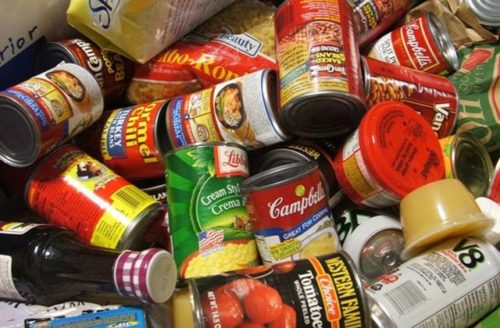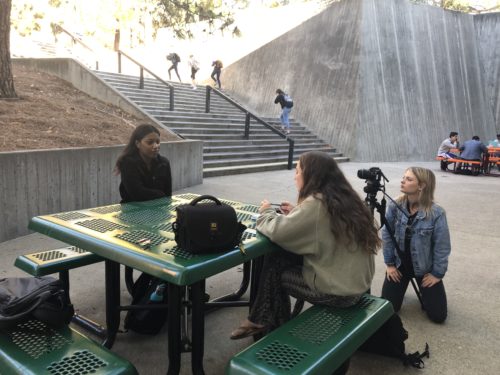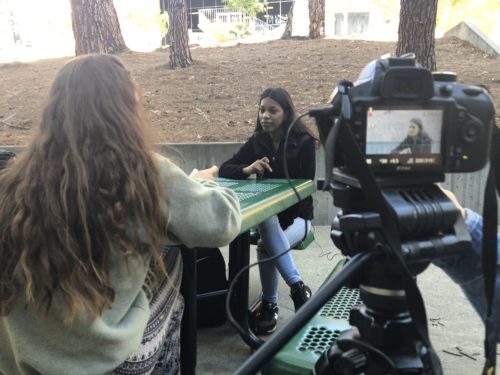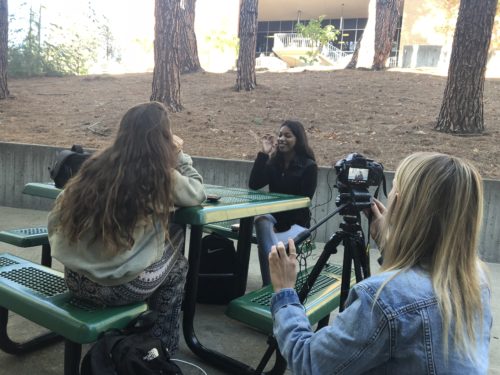You might think that Cal Poly San Luis Obispo students do not go hungry or struggle with funding for food, but that’s simply not the case.
Every year Cal Poly senior journalism students investigate various stories related to campus and our team: Mandie Geller, Erica Hudson, Reilly Roberts and I decided to find out more about how this program works and who it benefits.

Gathering Information
Our team investigated to find out more about a federally funded program on campus called Cal Fresh that aims to help provide students with the nutrition they need.
Since I was in charge of the strategy and engagement position, I made posts on various social media outlets (Facebook, Reddit, Snapchat) in order to search for students who have benefited from the program or know more about it. We found a variety of students that either use the program or have worked for it, but it should be noted that Facebook was the only successful outlet I found. Snapchat was almost useless since most people had not heard of the program and Reddit trolled me, called me an “idiot” or “I’ll write your story for you.” Basically, no one wanted to help me on either of those social media platforms.
After that, I compiled a backgrounder report on previous stories with related content. What I found were stories having a wide range of topics related to the program on campus. Most of them had to do with a larger scale regarding the CalFresh outreach in California and the effects the Trump Administration budget slashes have had on it such as this article written by the Tribune. We thought it would be best if we focused on how the program effects students since we simply do not have the time for a larger scale story.

We initially thought that the program works by applying to check eligibility based on income and once approved you are given up to $300 a month in food vouchers. What we found from the students who replied to our social media posts was that it is not nearly $300 a month. It’s actually closer to half of that on average for most students.
We interviewed a student who is enrolled in the program named Dezeray Cruz. She told us that she enrolled in the program because she did not feel that she made enough to purchase organic/healthy food. She was tired of the food served on campus and felt that most of the options on campus were not up to health standards. She decided to apply for the program was immediately approved.
“I felt that one of the best features of the program is that the vouchers allow me to buy healthier options at places such as the farmers market in downtown San Luis Obispo on Thursday evenings.”
Essentially we learned that the program is widely available for students, but she did not feel that awareness was high enough on campus. She felt that more people could benefit from the program if awareness was raised.

The Writing Process
Mandie Geller was in charge of writing the story and she felt the best way to get emotion out of this topic would be to interview a student who has had experience with the program and someone who works for it. “I thought it was interesting hearing about Dezeray’s experience with receiving CalFresh benefits and being able to buy fresh, organic food at the farmers market.”
Erica Hudson who worked on the multimedia section of the project, decided that the best way to express this topic was by, “using data from the on campus CalFresh program to visually display information and requirements about CalFresh programs in California and on college campuses.”
Reilly Roberts who was in charge of filming the project felt the best visual representation of this topic was by showing the emotion the sources expressed when speaking on the topic. “After learning more about how food insecurity is increasing during our interviews, I’m curious to see how programs develop to meet student needs over time.”

Blog written by Navid Golemohammadi